Interview: Raymond Biesinger
The self-taught Canadian illustrator on the sometimes blurry line between corporate and personal work

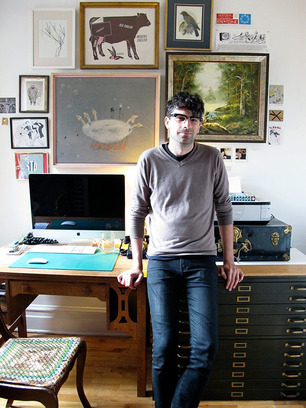
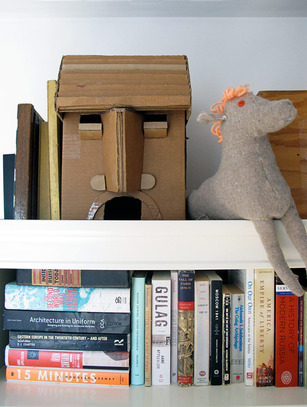
Montreal-based Raymond Biesinger is a self-taught illustrator. His work has featured in publications including the New Yorker, Monocle, the Guardian, Time, GQ, Dwell, the Globe & Mail. With such immense commercial success, we recently caught up with Biesinger in his studio for a chat about what it’s like working for “The Man” and how he approaches personal projects.
Explain your process on a personal piece as opposed to corporate or client work.
I like to think that years of doing commercial work has given me an armory of techniques to use on the personal. I’ve described before the actual process of constructing an illustration as a collage that doesn’t look like a collage—I find and make real-world geometric, geometric-ish, and textural objects and arrange them into a completely new form. So, that process is identical, except I can be more experimental or radical in the physical process of personal work.
The mental side, though, is very different. With a client, they give you material to dwell on. With self-directed work I can fixate on my true interests—the history of the 20th century, economics, the Famines, where commerce and art meet—and not have to pass ideas through other people’s filters.
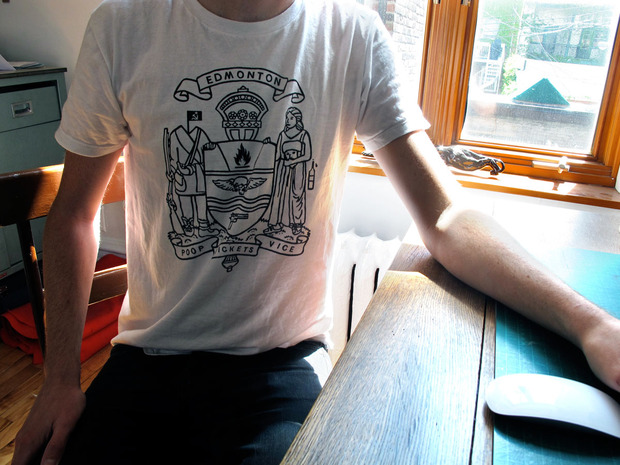
The results in such situations can be crazy. I’ve made a 28-foot long chart documenting six decades of my home city’s music scene, for example. Made a cassette tape with a 320-page liner art note book, and am working on a very large illustrated history of the Cold war. That said, I’m truly starting to run into enlightened commercial clients who have real budgets, and are willing to simply give me space and the freedom to do whatever I want without fear of editing.
The last such thing was for an Italian magazine called Il Sole 24 Ore. Their fiction supplement Rane had me make something like two spreads, three full-pagers and 24 quarter-pagers, an article, etc. about a topic of my own choosing. I went with “where the Italian Futurists meet the present” and they never requested a single edit. They bought the roughs, too. Pretty surprising, given that I was playing fast and loose with the most important art movement of that country’s 20th century. I can’t say enough good things about their art director, Francesco Franchi, for trusting me that much.
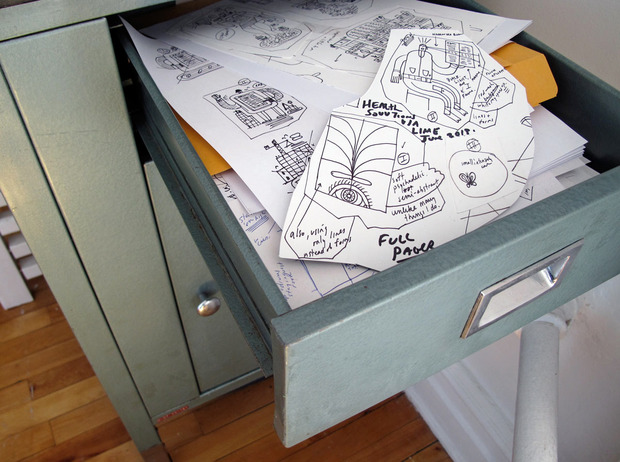
So mental process aside, do you find yourself in a place in your career where your corporate and personal artwork are interchangeable, or do you still keep elements back for personal compositions?
In that sense, some things that I do are interchangeable between commercial and personal projects. Others aren’t. Major typography, for example, is something I intentionally don’t do with commercial clients. Most expect a certain amount of flexibility with type, and that’s something my type setting process can’t offer.
To a “real” designer a small kerning adjustment isn’t a big deal. It’s an everyday kind of adjustment that takes moments. For me it involves individually moving each letter. I could pretend commercial clients have time for that, but the real world would intrude. It’d just be impractical and frustrating for everyone.
Likewise, I like burying myself in the specifics. Commercial clients assume I love data visualization because of it, but I actually can’t stomach that kind of thing unless I actually love the data itself. If it relates to The Famines, I’m game. If it relates to your annual report, I have other things to do.
In other ways, there’s an unpredictable relationship between the commercial and personal ends of what I do. The line-based aesthetic that I’ve recently used on a print (the “How Illustrations Are Made” series, a shirt for Sub Pop, etc.) I first conceived for a silver-foil on black cover of a business-minded magazine. It was a production direction that led to that fixation. I’m thinking about new personal things to do with that approach every day.
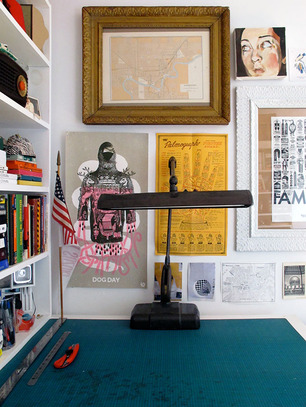
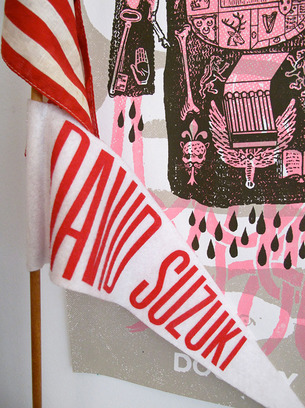
Can you tell us about your latest work and anything else that might be available soon on your webshop?
The latest thing I’ve done (besides some silkscreened versions of illustrations I made for Le Monde and Print) would be something called “How Illustrations Are Made.” I think we live in a culture that fetishizes the creative and wishes it could have all the magic release of creation and little of the practical labours and routines that are the foundations of creation.
These prints show the entirety of that practical side, in this case of an illustration studio. You can see the illustrator, occupying a small fraction of his or her studio factory. Elsewhere you can find everything from the billing and shipping departments, the incinerator that destroys un-used ideas, the anti-theft dagger, the distraction of alcohol, copyright concerns, and so on. It’s a bit of a buzzkill, but it was actually tremendous fun to make.
Other things coming up include a baby. And then the first installment of a book called “An Illustrated History of the Cold War.” I know babies tend to throw off schedules, though, so we’ll have to play it by ear.
Raymond’s latest print “How Illustrations are Made” is available in charcoal, grey, or purple at his Etsy shop for $30.
Images courtesy of Raymond Biesinger









